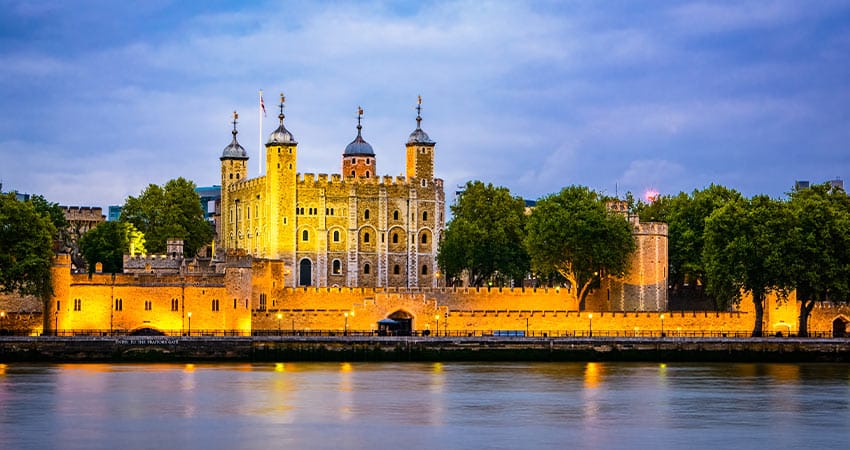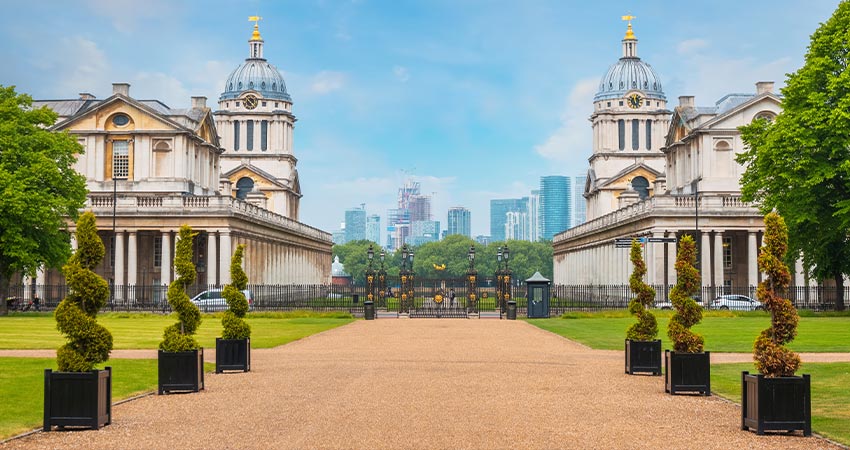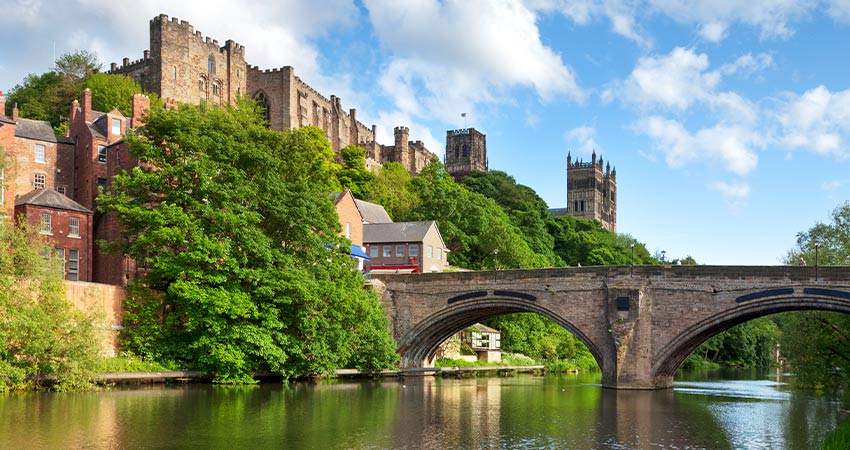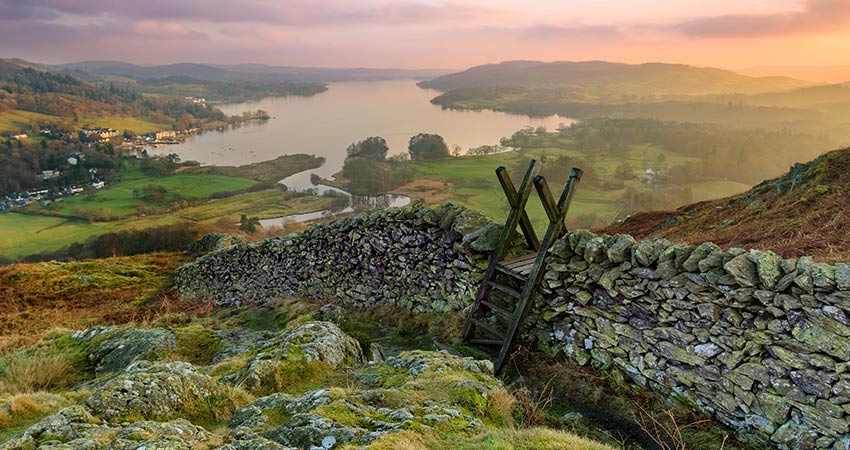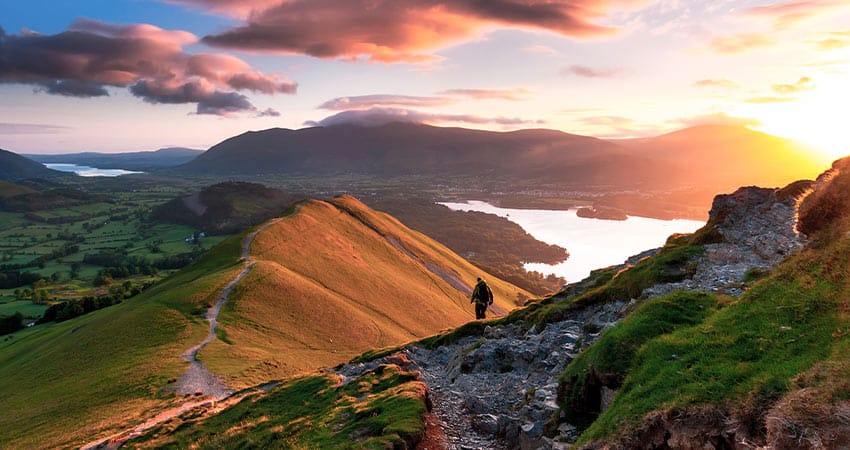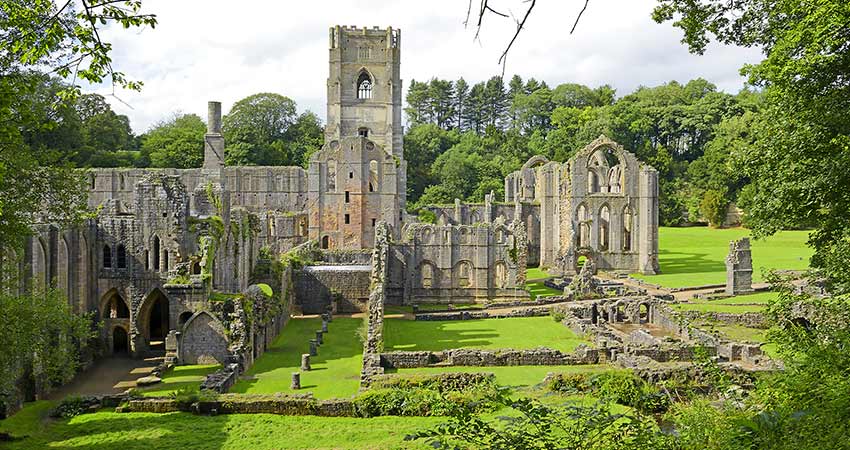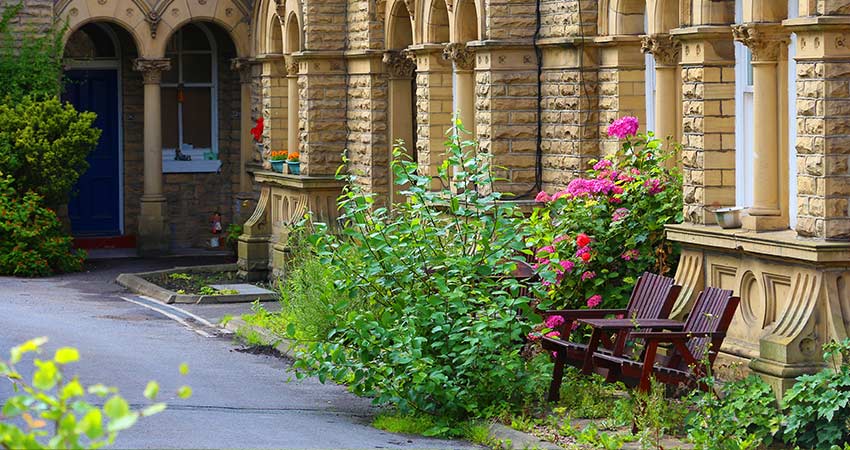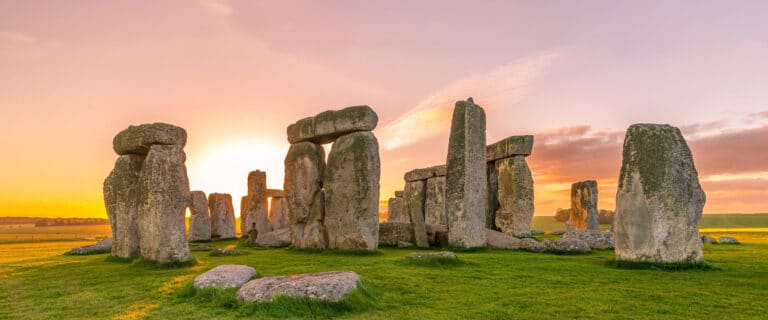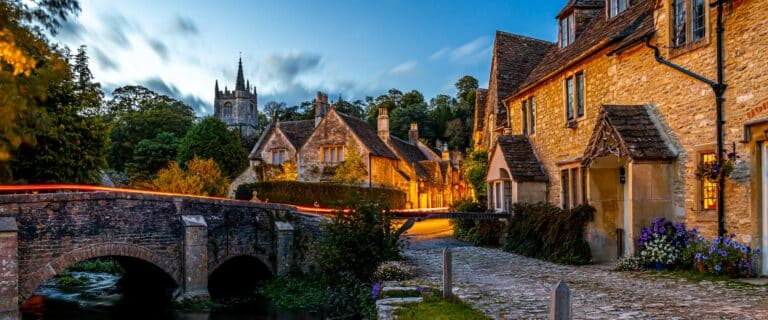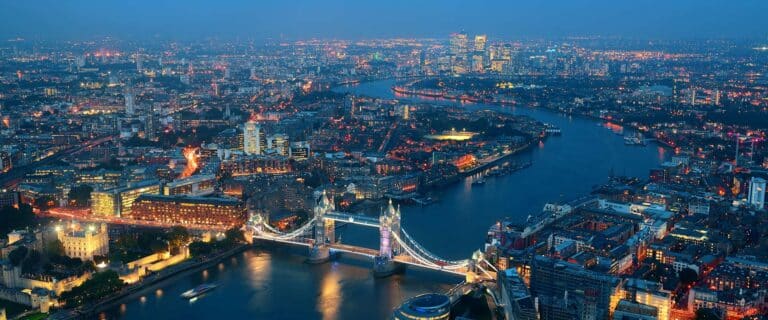When you visit the British Isles, there’s a good chance that you’ll spend time in London. Consider adding Westminster Abbey, the Tower of London, and Big Ben to your city bucket list. Heading north from London, the English Lake District and the Ruins of Fountains Abbey are both spots of inspiration. Perhaps you’d like to see the places where industry learned to keep up with demand. All are possibilities when you visit the sites of “Outstanding Universal Value” in London and Beyond!
The Tower of London
Go to the Tower of London and you’ll see the Crown Jewels, Yeoman Warders, mysterious Ravens and, of course, the magnificent White Tower. The Tower was built on the River Thames by William the Conqueror. Its purpose was to protect London and to assert the city’s importance and power. Inside you’ll find a unique Romanesque Chapel, the 11th century Chapel of Saint John the Evangelist. You’ll also find the Royal Armouries Collections. This includes a 350-year-old exhibition called The Line of Kings and the armour of Henry VIII, Charles I, and James II.
The Crown Jewels have been displayed in the Tower of London for nearly 400 years. This is an extraordinary collection of 24,000 gemstones and are used in present royal ceremonies, including the Coronation Spoon and St. Edward’s Crown. Still under armed guard, listen to the stories of their past, who wore them, and what makes them important. Their uses and magical history will amaze you.
The Tower Ravens are known as The Guardians. It is said that if the Ravens leave, the Tower will fall. Charles II is the first to insist that the Ravens be protected. Residing on the South Lawn, the current birds are named Jubilee, Harris, Poppy, Georgie, Edgar, and Branwen. Ravens are mythic, intelligent birds, and the tower has a Ravenmaster in charge of assuring their continued health and well-being.
We know the Yeoman Warders by their more common name, “The Beefeaters.” Take a tour with one of the Yeoman and you’ll hear stories steeped in 1,000 years of history. Palace intrigue, betrayals, great loves, tragedy, those imprisoned at the Tower, and illicit liaisons… ask your Beefeater questions!
The Palace of Westminster, Westminster Abbey, and St Margaret’s Church
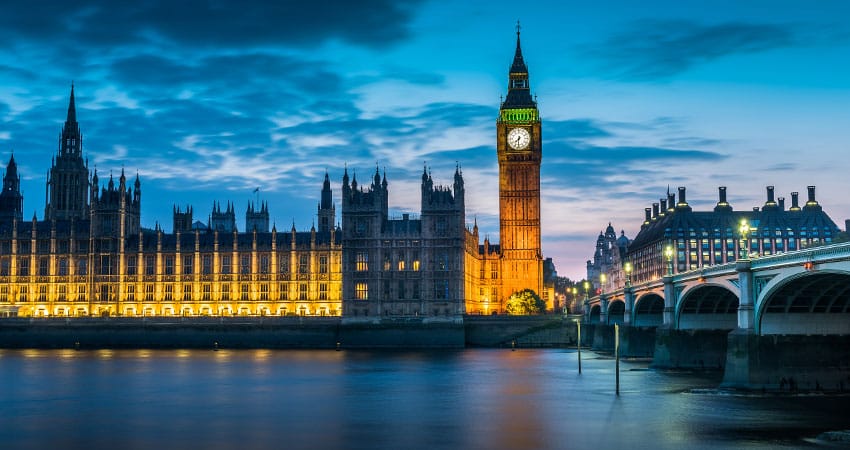
Westminster Abbey, the Palace, and St. Margaret’s exemplify a parliamentary monarchy that has continued through good times and lean for nine centuries. Explore the Royal Tombs, the Chapter House, daunting Westminster Hall, the House of Lords, and House of Commons—art surrounds you. It is, in fact, a Museum of the history of the United Kingdom.
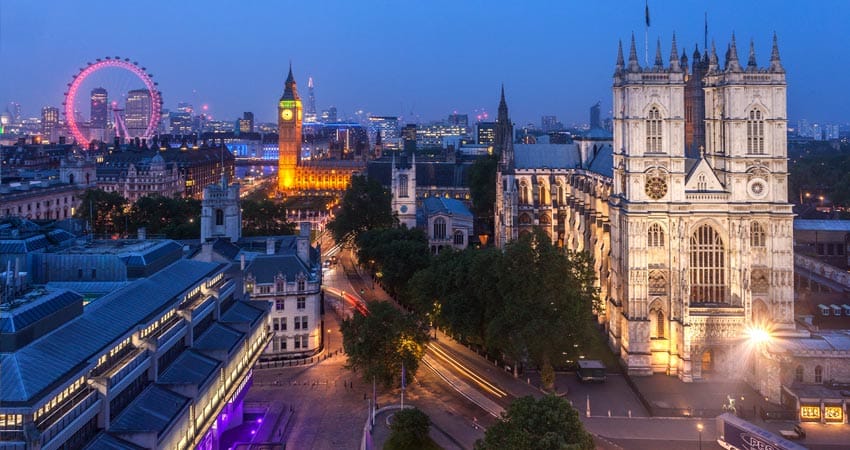
All are next to the River Thames in the very heart of London. Edward the Confessor first built his palace and church on Thorny Island in the 11th century. It has changed through time, but it still illustrates the connection of church, monarchy, and state. Today, they function in their original roles. The Abbey is where monarchs are crowned, where they are married, and finally buried; worship services are still held here. The Palace of Westminster is the seat of Parliament. Westminster School began in 1178 and was founded again by Queen Elizabeth I in 1560. The sound of Big Ben ringing out time is ever present.
Maritime Greenwich
Built along the River Thames, this Baroque complex of the Royal Hospital for Seamen and the Royal Observatory was founded in 1675 and within the Royal Park. Maritime Greenwich features two centuries of royal patronage and the work of England’s most notable architects of the time. Most importantly, it is home to England’s artistic and scientific achievements of the 17th and 18th century.
Greenwich Town grew up at the gates of the Royal Palace. You’ll find villas and stucco terraces around an 18th century church. The Royal Park is an artistic masterpiece of symmetry situated on an irregular landscape, and it is enjoyed by all.
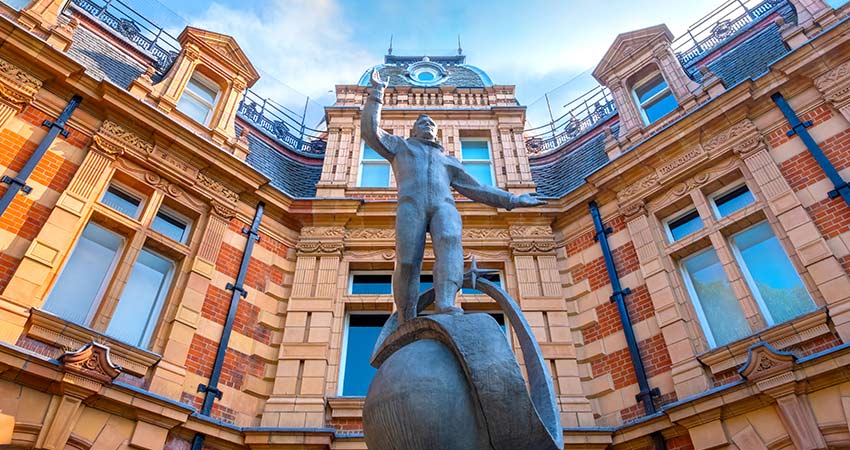
The most important feature here is the Royal Observatory. It has astounding astronomical importance and was the invention of scientists Robert Hook and John Flamsteed, the First Astronomer Royal. He was the innovator of the accurate measurement of the Earth’s movement and contributed to global navigation. The Greenwich Observatory is now the baseline for the entire world’s time zone system and for measuring international longitudes.
Durham Castle and Cathedral
Durham Castle was built in the late 11th century, by William the Conqueror, to house two 7th century saints. Its outstanding cultural value gives us the importance of early monastic communities. It is also one of the finest examples of Norman architecture in England.
Within the castle grounds, you’ll find the Durham Palatinate, including the Bishops Court (now a library), almshouses, schools, and the Palace Green. The Palace Green is still used as a forum for public events.
The cathedral and the castle are on a peninsula formed by a bend in the River Ware. It has steep river banks, a natural line of defense to fend off Viking raids. Walk inside and see the vaulting. It had not been used before in a building. It was, in turn, a place of religious worship, learning, and a residence. It is one of the country’s most powerful symbols of the Norman conquest of Britain.
The English Lake District
When in England, visit the Lake District; its natural beauty was celebrated in 2017 when it became a UNESCO World Heritage Site. The poetry of the Romantic period was influenced by natural lakes and lush hills. William Wordsworth, Samuel Taylor Coleridge, and John Ruskin were inspired by the pristine environment of water, forests, and fells. Wordsworth’s book, Guide through the District of the Lakes, was the beginning of tourism to the area—he is often considered the quintessential Lake District poet.
This area of northwest England is about 890 square miles. Gorgeous, narrow glaciated valleys, with steep hillsides and slender lakes, etch the land with beauty and harmony. Visit England’s Lake District and you’ll see local breeds of sheep, small farmers, and traditions that are hundreds of years old. From the 18th century onward, this area was the engine for significant social and cultural forces to appreciate and protect scenic landscapes. Before this time, nature was considered something harsh, something to be feared.
Villas, gardens, and formal landscaping added to the new relationship people had with their environment. They became aware of their emotional response to the country. Beside poets, artists also felt the magnetic pull of the lakes. Perhaps for the first time in England, it was felt that a graceful landscape was for everyone to enjoy, not just the wealthy. The urge to protect it led to the National Trust movement, and its influence was felt throughout Europe and the United States.
Studley Royal Park and the Ruins of Fountains Abbey
This landscape was designed in the 18th century. Along with water gardens and pleasure grounds, it includes the ruins of Fountains Abbey. When you visit, notice that the whole of the buildings, the gardens, and the landscape fit together harmoniously. This illustrates over 800 years of human habitation and design.
Studley Royal Park is one of the few great 18th century gardens that survives in its original form, and it has some of the most amazing water gardens in England. The design came from the natural landscape rather than being imposed upon it. The garden has canals, ponds, cascades, lawns, hedges, beautiful garden buildings, gateways, and statues.
The Fountains Abbey Ruins is from the 12th century. At the west end of the estate is the Elizabethan Fountains Hall, built in part from reclaimed Abbey stone. A large deer park is near Saint Mary’s Church, a masterpiece of Victorian Gothic architecture. This site is unique because the landscape was built around one of the largest medieval ruins in the United Kingdom. That, along with the water garden, is considered to be a work of creative genius.
Saltaire
Head over to West Yorkshire, and you’ll find a well preserved industrial village from the second half of the 19th century. Saltaire is an outstanding example of philanthropic paternalism. This (now outdated) notion had an influence on developments in industrial social welfare and urban planning. The unified salt mill buildings, the new mill, the stratified employees housing, the dining room, Congregational Church, almshouses, hospitals, school, institute, and park are an exceptional complex of this time and in that era.
Saltaire became a model for industrial developments in the United Kingdom, the USA, and in Italy. Social welfare ideas were built into the design and part of the 19th century Garden Movement, which then became global in nature. Saltaire is also an example of the pride of basic industries, such as textile, in the economy of Great Britain.
Derwent Valley Mills
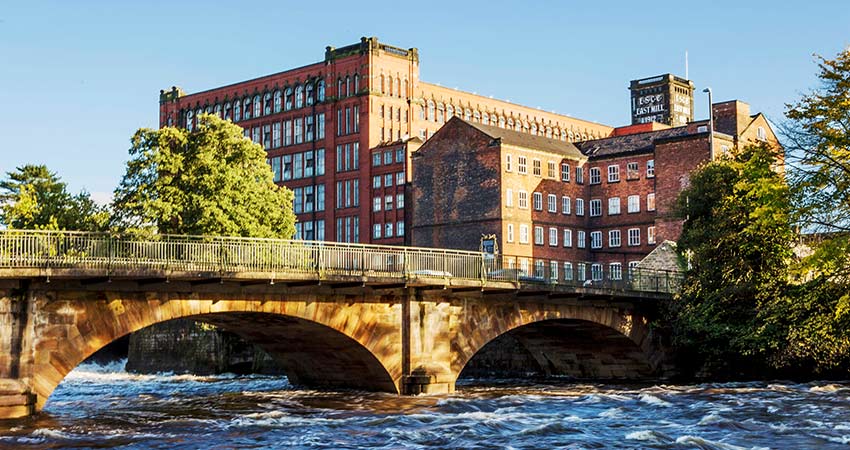
The Derwent Valley is where the modern factory system was born. By the late 17th century, silk was an important part of high society’s dress, and the demand for it grew. In an effort to increase production through the use of water power, a mill was built near the city center on an island in the River Derwent. The experiment failed but one employee thought if water power could be perfected, there would be a market for what it could produce.
That man, Arkwright, went to Italy, did some industrial espionage, went home, and patented his design in 1769. His water-powered machinery established a template for organized labor, and the industrialists followed. Go to the Derwent Valley for 18th and 19th century cotton mills and housing. The four main industrial settlements are Cromford, Belper, Milford, and Darley Abbey. Each is by the river Derwent, and the waters of that river drove the cotton mills. The UNESCO site covers a 15-mile stretch of Derwent Valley in Derbyshire.
If you only visit London on your trip to England, go to Westminster Abbey, the London Tower, and see the Crown Jewels. Travel farther afield, and you’ll come across more UNESCO sites. Each is an international treasure that celebrates the beauty of landscape and the heritage of history.
Let your Destination Expert know that on your next vacation to London, you would like to see beyond… Beyond time and beyond place into UNESCO World Heritage sites that have outstanding value for every world citizen.


